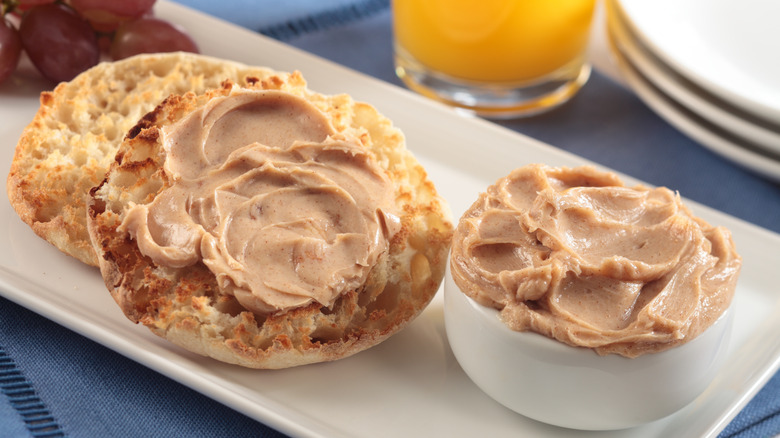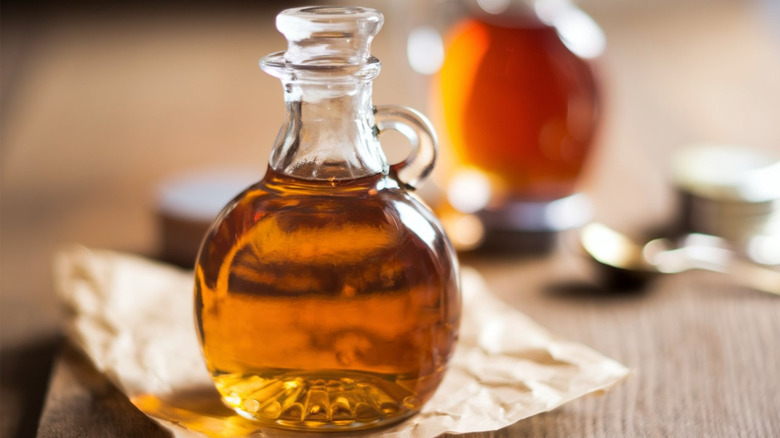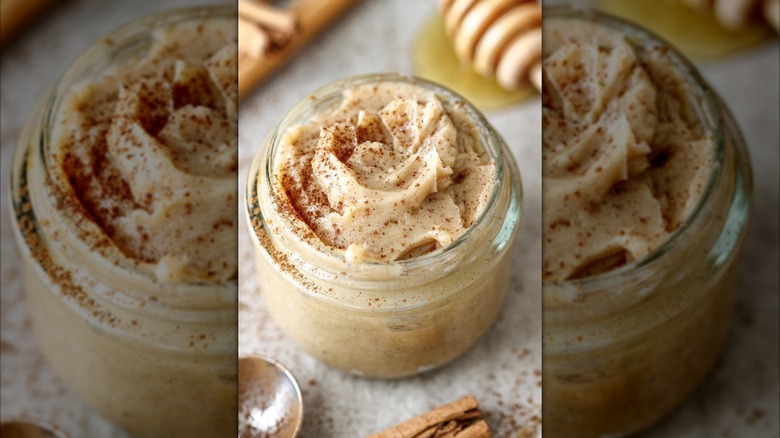How To Make Your Own Maple Butter For A Simple Fall Spread
If there's anything better than a decadent treat, it's a decadent treat that's easy to make. One such goodie features a quintessential flavor of autumn: maple. If you have real maple syrup, some butter, and a few minutes to spare, you can whip up a maple butter spread that is ridiculously easy to execute and oh-so tasty.
Creating this yummy fall treat is literally as simple as combining maple syrup and butter. That's it! You can melt the two together for a pourable spread, great for uses like topping pancakes or adding to oatmeal. Or you can make a whipped butter spread by softening your butter at room temperature and then whipping in the maple syrup little by little, using an electric mixer for the best results. This approach yields a great, spreadable topping ideal for slathering onto toast and quick breads or even incorporating maple flair into savory creations like a whipped sweet potato dish.
Compound butter is so simple that it's easy to play around with ratios. A good baseline is using a 1:1 ratio, but experiment until you find the balance of flavor and viscosity that you want. Once you've got the base made, give it a little taste. If it isn't sweet enough, add some maple. If you want it a little thicker, whip in some more butter.
Selecting your butter and maple syrup
In making this quick maple butter, recipes vary as to whether you should use salted or unsalted butter. At the end of the day, it's really a matter of personal preference as the final texture of your maple butter won't be affected. You can also use a plant-based butter.
You also have flexibility regarding the maple syrup. Some recipes call for using dark amber syrup, which used to be classified as grade B (and yes, there are differences between grade A and grade B maple syrup if you're unfamiliar). Others note that using either dark or light amber is fine. Others require only pure maple syrup without any classification distinction — just use whatever type of maple syrup you prefer or have on hand. The one caveat is you need to make sure what you're using is real maple syrup — not something made from sugar or corn syrup with artificial maple flavoring. If you're still feeling uncertain, this Food Republic guide details all you need to know about maple syrup.
Maple butter variations
You can tweak this delicious duo in various ways. For instance, a dash of salt — an ingredient that instantly boosts the flavor of maple syrup — gives your maple butter a nice, salty-sweet dimension and really amps up the maple taste. A flaky sea salt is particularly good and brings texture, while a smoked sea salt can deepen the flavor with a savory quality.
Some recipes incorporate brown sugar in addition to the maple butter for a sweeter, denser spread with rich, caramel notes. The autumnal essence of the maple can be further elevated by sprinkling in other fall flavors, like cinnamon or pumpkin pie spice. Incorporating vanilla bean powder or paste is also popular (and delicious).
An alternative approach to maple butter — known as maple cream — omits the butter altogether and uses only maple syrup, nothing else. It is essentially a whipped, spreadable maple syrup. To make it, heat pure syrup to 235 degrees Fahrenheit (using a candy thermometer to monitor the temperature) and then rapidly cool it in an ice bath to crystallize the syrup. Then whip it until it becomes creamy and spreadable – think the consistency of a nut butter.



